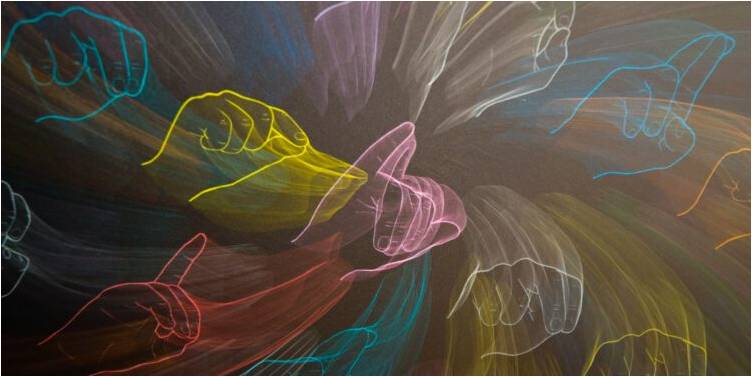SignON, a project that will bring effective communication between listeners and deaf or hard of hearing people
SignON, a project that will bring effective communication between listeners and deaf or hard of hearing people
It has received a grant from the Horizon 2020 program of the European Union with a funding of 5.6 million euros for the next 3 years. Josep Blat and Horacio Saggion, members of the DTIC's Interactive Technologies and Natural Language Processing research groups, respectively, are taking part. It begins on January 1, 2021.

The SignON project will begin on January 1, 2021 with a budget of 5.6 million euros for the next 3 years of the Horizon 2020 program of the European Union to conduct state-of-the-art research and develop an open solution for to mobile for automatic translation between sign and oral languages (written and spoken).
The SignON EU consortium of 17 European partners led by Prof. Andy Way, Professor of Computing at Dublin City University, Ireland (coordinator), and Dr. Dimitar Shterionov Assistant Professor in Cognitive Science and Artificial Intelligence at Tilburg University, The Netherlands (scientific lead), have received this award to conduct state of the art research and develop a mobile solution for automatic translation between sign and oral (written and spoken) languages. UPF is represented by Josep Blat and Horacio Saggion, members of the research groups in Interactive Technologies (GTI) and Natural Language Processing (TALN), of the Department of Information and Communication Technologies (DTIC), respectively. "The project will allow us to continue moving forward on issues related to accessibility and to make information available to everyone," said Blat and Saggion.
SignON is a user-centric and community-driven project that aims to facilitate the exchange of information among deaf and hard of hearing, and hearing individuals across Europe targeting the Irish, British, Dutch, Flemish and Spanish Sign and English, Irish, Dutch, Spanish oral languages. There are 5,000 deaf Irish Sign Language (ISL) signers; in the UK around 87,000 deaf signers use British Sign Language (BSL); in Flanders, Belgium some 5,000 deaf people use Flemish Sign Language (VGT); there are approximately 13,000 signers using Sign Language of the Netherlands (NGT); and it is estimated that there are over 100,000 Spanish Sign Language (LSE) signers.
Through collaboration with these European deaf and hard of hearing communities, researchers will define use-cases, co-design and co-develop the SignON service and application. The objective of the research project is the fair, unbiased and inclusive spread of information and digital content in European society.
The SignON communication service will be more than an advanced machine translation system. Behind the scenes, SignON will incorporate sophisticated machine learning capabilities that will allow (i) learning new Sign and oral languages; (ii) style-, domain- and user-adaptation and (iii) automatic error correction, based on user feedback. To the user, SignON will deliver signed conversations via a life-like avatar built with latest graphics technologies.
To ensure wide uptake, improved sign language detection and synthesis, as well as multilingual speech processing for everyone, the project will deploy the SignON service as a smart phone application running on standard modern devices. While the application is designed as a light-weight interface, the SignON framework, will be distributed on the cloud where the computationally intensive tasks will be executed.
Speaking about the project Prof Andy Way says: “I am pleased to coordinate the SignON project, which will develop a free, open application and framework for conversion between video (capturing and understanding Sign language), audio and text and translation between Sign and spoken languages.”
The SignON project will commence on 01/01/2020 and the consortium are currently recruiting a wide range of experts in the fields of Natural Language Processing (NLP) Machine Learning (ML), Deep Learning (DL), Machine Translation (MT) Linguistics, Deaf studies, education, 3D graphics and others to join the SignON team.
SignON Partners
Partners: Dublin City University (DCU) - coordinator, Ireland; Fincons Group (FINC), Switzerland; Instituut voor de Nederlandse Taal (INT), The Netherlands; University of the Basque Country (UPV/EHU), Spain; The National Microelectronics Applications Centre Ltd (MAC), Ireland; Pompeu Fabra University (UPF), Spain; Technological University Dublin (TUDublin), Ireland; Trinity College Dublin (TCD), Ireland; VRT, Belgium; Ghent University (UGent), Belgium; Vlaams GebarentaalCentrum (Flemish Sign Language Centre - VGTC), Belgium, University College Dublin (UCD), Ireland; Stichting Katholieke Universiteit (RU), The Netherlands; Nederlandse TaalUnie (NTU), The Netherlands; Katholieke Universiteit Leuven (KU Leuven), Belgium; European Union of the Deaf (EUD), Belgium; Tilburg University (TiU) - scientific lead, The Netherlands.
